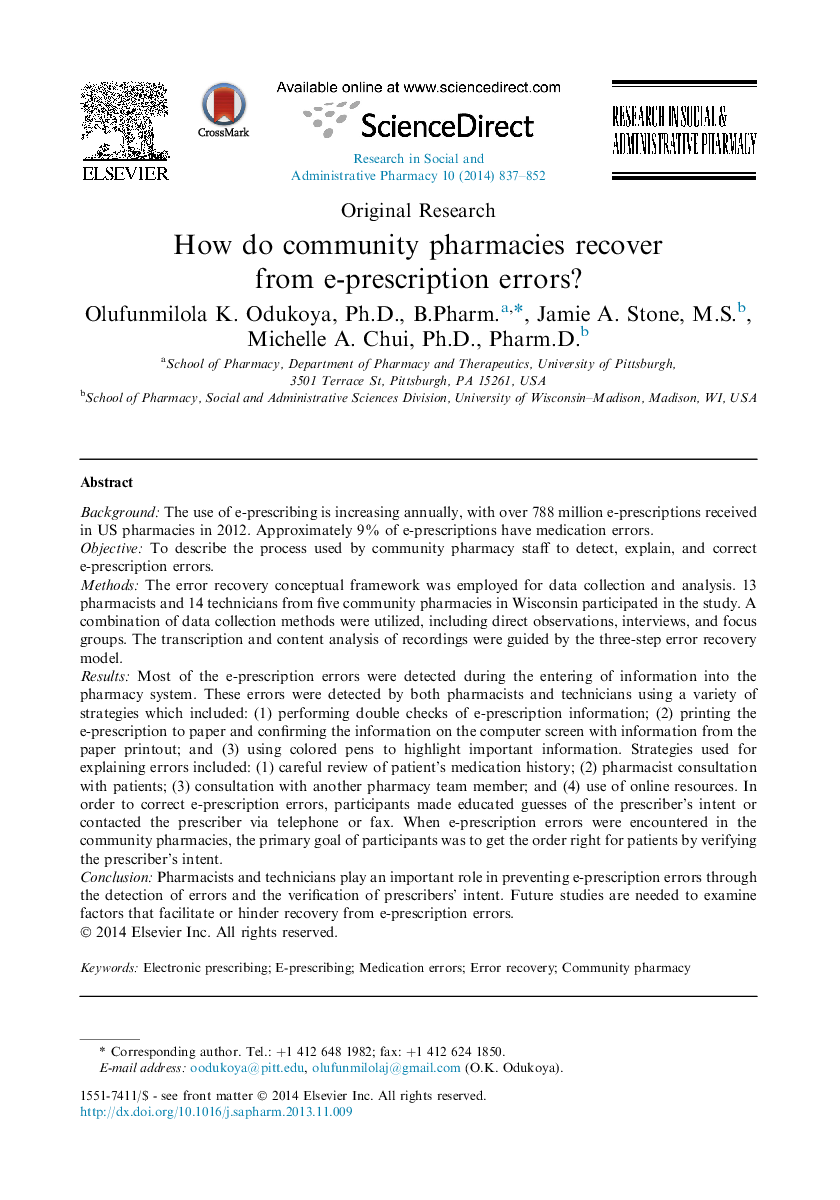| Article ID | Journal | Published Year | Pages | File Type |
|---|---|---|---|---|
| 2508362 | Research in Social and Administrative Pharmacy | 2014 | 16 Pages |
BackgroundThe use of e-prescribing is increasing annually, with over 788 million e-prescriptions received in US pharmacies in 2012. Approximately 9% of e-prescriptions have medication errors.ObjectiveTo describe the process used by community pharmacy staff to detect, explain, and correct e-prescription errors.MethodsThe error recovery conceptual framework was employed for data collection and analysis. 13 pharmacists and 14 technicians from five community pharmacies in Wisconsin participated in the study. A combination of data collection methods were utilized, including direct observations, interviews, and focus groups. The transcription and content analysis of recordings were guided by the three-step error recovery model.ResultsMost of the e-prescription errors were detected during the entering of information into the pharmacy system. These errors were detected by both pharmacists and technicians using a variety of strategies which included: (1) performing double checks of e-prescription information; (2) printing the e-prescription to paper and confirming the information on the computer screen with information from the paper printout; and (3) using colored pens to highlight important information. Strategies used for explaining errors included: (1) careful review of patient's medication history; (2) pharmacist consultation with patients; (3) consultation with another pharmacy team member; and (4) use of online resources. In order to correct e-prescription errors, participants made educated guesses of the prescriber's intent or contacted the prescriber via telephone or fax. When e-prescription errors were encountered in the community pharmacies, the primary goal of participants was to get the order right for patients by verifying the prescriber's intent.ConclusionPharmacists and technicians play an important role in preventing e-prescription errors through the detection of errors and the verification of prescribers' intent. Future studies are needed to examine factors that facilitate or hinder recovery from e-prescription errors.
